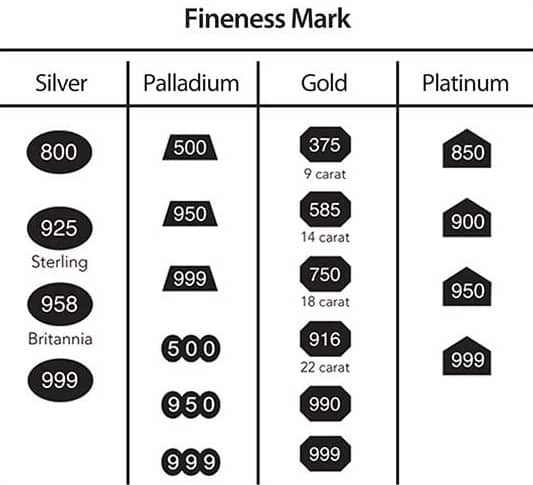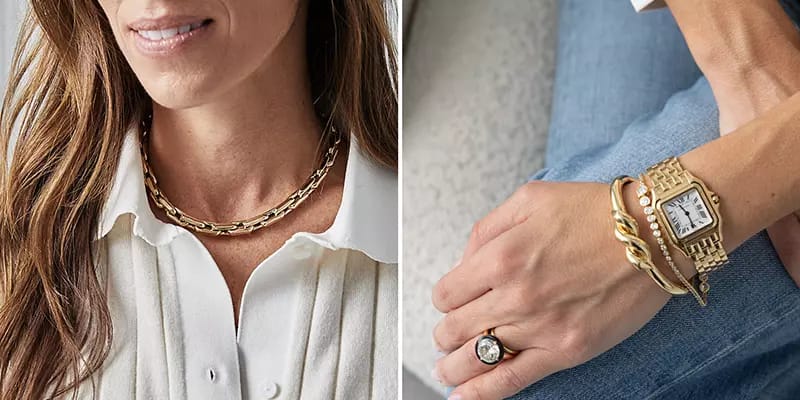Are you looking to invest in jewelry for long-term value? Do you want to know how to pick the right pieces to ensure the best return on your investment? This jewelry investment guide will provide you with the information you need to make wise decisions about your purchases. We’ll discuss the factors to consider when selecting jewelry with long-term value, and provide tips for finding quality pieces that will stand the test of time.
1. Identifying Quality Jewelry
When investing in jewelry, it’s important to identify quality pieces that will retain their value over time. Here are some key factors to consider:
- Materials: High-quality jewelry is typically made from precious metals like gold, silver, or platinum, and may feature precious stones like diamonds or emeralds. Look for pieces that are stamped with the appropriate hallmark and are made from solid, not plated, materials.
- Craftsmanship: Well-made jewelry should be carefully crafted with attention to detail and precision. Look for pieces that have clean, smooth edges and secure settings for any stones.
- Brand: Certain brands are known for producing high-quality, timeless pieces that hold their value over time. Consider investing in pieces from reputable brands with a strong track record in the industry.
- Condition: Finally, be sure to carefully inspect any jewelry you’re considering purchasing. Look for signs of wear or damage, and consider having the piece appraised by a professional to ensure its value.
By considering these factors, you can identify quality jewelry pieces that will provide a worthwhile investment over time.

2. Understanding Jewelry Appraisals
One of the most important aspects of investing in jewelry is to understand jewelry appraisals. A jewelry appraisal is an assessment of the quality, authenticity, and value of a piece of jewelry. A qualified appraiser will examine the piece of jewelry and provide an expert opinion on its worth. This is an essential step in making sure that you are making a sound investment.
When investing in jewelry, it is important to get a professional appraisal. This can help you determine the true worth of a piece of jewelry and make sure that you are not paying too much or too little. A professional appraisal will also provide you with the necessary documentation to prove the value of the jewelry should you ever need to insure or resell it.
It is important to remember that jewelry appraisals are based on subjective opinions. The appraiser will take into account the quality of the piece, its craftsmanship, and the materials used to create it. For example, if a piece of jewelry is made from a rare gemstone, it is likely to be valued higher than a piece made of a more common stone. It is also important to note that appraisals can be affected by market fluctuations, so they should be updated regularly.
Jewelry appraisals can be done at a jewelry store or by a qualified appraiser. It is important to make sure that the appraiser has the necessary credentials and experience, as this will ensure that the appraisal is accurate and reliable. It is also important to ask for references from the appraiser and to make sure that the appraisal is properly documented.

3. Researching the Jewelry Market
Researching the jewelry market is an essential step in making informed investment decisions. It helps you understand the current trends, demand, and supply of different types of jewelry. The first step is to identify the type of jewelry you want to invest in, such as diamonds, gold, or antique pieces. Once you have identified the type, research the market trends, prices, and potential risks involved.
You can start by reading industry reports, market analysis, and news articles related to the jewelry market. This will give you an idea of the current state of the market and the factors that influence it, such as economic conditions, consumer preferences, and global events. You can also consult with experts in the field, such as appraisers, jewelers, and investment advisors.
Another valuable resource is online marketplaces and auction sites. These sites offer a vast selection of jewelry, and you can analyze the prices and demand for different types of pieces. You can also attend jewelry shows and exhibitions to gain insights into the latest trends and designs.
It’s important to note that the jewelry market can be volatile, and prices can fluctuate based on various factors. Therefore, it’s crucial to conduct thorough research and consult with experts before making any investment decisions.
Adding a chart that shows the price trends of different types of jewelry over the years can help you make informed investment decisions based on historical data.
4. Evaluating Jewelry Designers and Brands
When it comes to investing in jewelry, it’s important to evaluate both the designer and the brand before making a purchase. This can help ensure that the piece you choose will have long-term value and potentially increase in worth over time.
One way to evaluate a jewelry designer is to research their background and experience in the industry. Look for designers who have a strong reputation for quality craftsmanship and unique designs. You may also want to consider their use of materials, such as precious metals and gemstones, to ensure that the piece is of high quality.
When evaluating a brand, consider its overall reputation in the industry and its commitment to ethical and sustainable practices. Look for brands that use responsibly sourced materials and have a transparent supply chain. This can help ensure that your investment is not only valuable but also ethical.
It’s also important to consider the market demand for the designer and brand. Look for pieces that are in high demand and have a history of increasing in value over time. This can help ensure that your investment will hold its value and potentially increase in worth.
To assist in your evaluation, you may want to consult with a reputable appraiser or seek advice from a trusted jeweler. They can offer insights and guidance on the value and potential long-term worth of a piece.
Overall, taking the time to evaluate both the designer and brand can help ensure that your investment in jewelry is a wise one.

5. Assessing Jewelry Metals and Gemstones
Assessing the quality of jewelry metals and gemstones is crucial when investing in valuable pieces. Here are some key factors to consider:
- Metal quality: The purity of the metal used in jewelry affects its value. For example, gold is measured in karats, with 24 karats being 100% pure gold. The higher the karat, the more valuable the piece.
- Gemstone quality: The quality of gemstones is determined by the “Four Cs”: cut, clarity, colour, and carat weight. A well-cut gemstone with high clarity and colour will be more valuable than a poorly cut, cloudy stone with a dull colour.
- Brand reputation: Investing in jewelry from well-known brands with a good reputation can increase the value of the piece.
- Market demand: The demand for certain types of jewelry can fluctuate over time. It’s important to research current market trends and demand before investing in a piece.
- Authenticity: Ensure that the jewelry is authentic and comes with proper certification. This can be done by consulting with a reputable appraiser or jeweler.
By considering these factors, you can make informed decisions when investing in jewelry with long-term value.

6. Building a Diversified Jewelry Portfolio
Building a diversified jewelry portfolio is crucial for any investor who wants to maximize their long-term gains. Diversification means investing in different types of jewelry pieces, such as rings, necklaces, bracelets, and watches, made from different materials, like gold, silver, and diamonds. This strategy spreads the risk and ensures that you won’t lose all your investment if one type of jewelry loses its value.
When building your diversified jewelry portfolio, consider the following factors:
- Quality: Invest in high-quality pieces that are well-crafted and made from precious metals and gems.
- Rarity: Look for unique pieces that are hard to find and have historical or cultural significance.
- Trends: Stay up-to-date with the latest jewelry trends, but don’t invest solely based on them.
- Brand: Invest in reputable brands with a proven track record of quality and value.
It’s also important to keep your portfolio balanced by investing in jewelry pieces that suit your personal style and taste. You can consult with a jewelry expert or appraiser to help you make informed decisions.
Remember that building a diversified jewelry portfolio requires patience, research, and a long-term perspective. Keep your portfolio safe by storing your pieces in a secure location, such as a safe or a safety deposit box.
Conclusion:
Investing in jewelry requires careful consideration of various factors, including quality, brand reputation, and market demand. High-quality materials, craftsmanship, and the piece’s authenticity play a significant role in determining its long-term value. Additionally, understanding jewelry appraisals, researching market trends, and building a diversified jewelry portfolio can help ensure a sound investment that appreciates over time.
